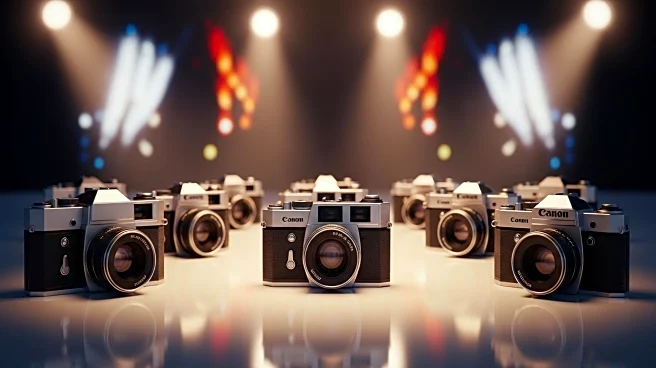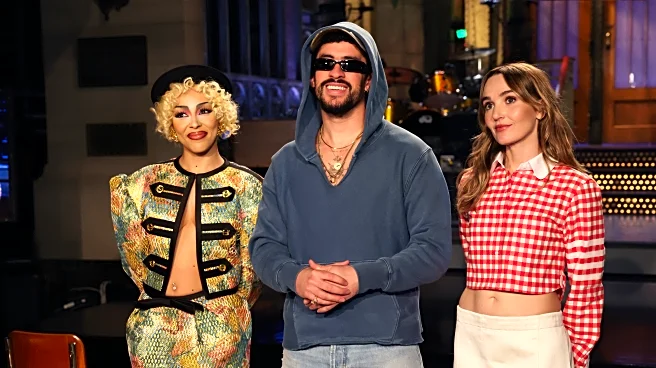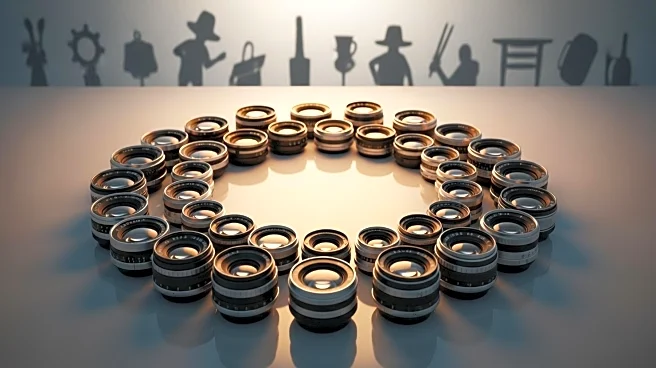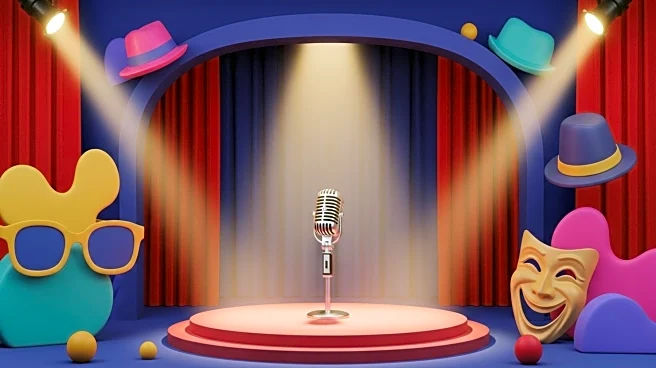What's Happening?
As 'Saturday Night Live' kicks off its 51st season, the show continues to honor its tradition of celebrity 'bumper' photos, a practice that has been part of the show since its inception in 1975. These portraits, which appear briefly during telecasts, have been crafted by only two photographers over the years: Edie Baskin and Mary Ellen Matthews. Baskin, who started the tradition, captured the allure of New York City through hand-tinted black-and-white images, while Matthews, who took over in 2000, has added high-concept, surreal elements to the portraits. Both photographers have released art books showcasing their work, highlighting the evolution of celebrity portraiture through the decades. The bumpers feature a wide array of celebrities, from Bad Bunny to Steve Martin, and are created in a rush to meet airtime deadlines.
Why It's Important?
The 'SNL' bumper photos are significant as they reflect the changing landscape of celebrity culture and portraiture over the years. These images offer a unique glimpse into the personalities of some of the most famous individuals in entertainment, capturing them in a relaxed and often humorous light. The tradition underscores the show's commitment to creativity and collaboration, involving various departments to bring these portraits to life. As the media landscape evolves, these bumpers serve as a reminder of the enduring appeal of 'SNL' and its ability to adapt and innovate while maintaining its core traditions.
What's Next?
With the start of the new season, 'SNL' will continue to feature these iconic bumper photos, offering fresh takes on celebrity imagery. Mary Ellen Matthews will keep collaborating with hosts and musical guests to create memorable portraits, drawing inspiration from their careers and personalities. As the show progresses, viewers can expect to see new and innovative approaches to these images, reflecting current cultural trends and artistic influences.
Beyond the Headlines
The 'SNL' bumper tradition highlights the intersection of art and entertainment, showcasing the creative process behind capturing celebrity personas. It also raises questions about the role of photography in shaping public perceptions of celebrities and the impact of visual media on cultural narratives. The evolution of these portraits mirrors broader shifts in media consumption and the importance of visual storytelling in the digital age.











